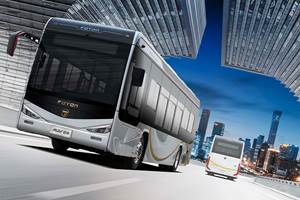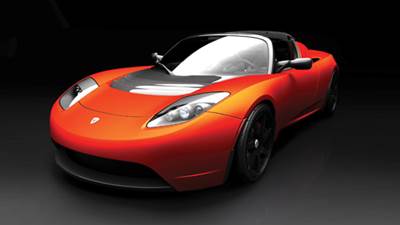Are EVs here to stay this time?
Right now, established and startup automakers are expending a lot of time, effort and capital to put electric vehicles (EVs) on the road.
Right now, established and startup automakers are expending a lot of time, effort and capital to put electric vehicles (EVs) on the road. But it’s not the first time and, therefore, it’s fair to ask: Will this turn out to be just another expensive false start? In 1990, the California Air Resources Board (CARB, Sacramento, Calif.) mandated that an increasing percentage of fleets sold into the state be zero-emissions only to see it repealed a few years later. In the past decade, billions of dollars were expended in the still-unrealized attempt to develop affordable, nonpolluting fuel-cell-powered electric vehicles and the new infrastructure this would require. There was a similar rush to convert to flex- and bio-fuel powertrains that offer countries capable of growing the plant precursors for those fuels a chance at greater energy security. For the most part, bio-fuel efforts created more problems than they solved by increasing grain prices on the commodities markets, leading to starvation and riots in developing countries.
Spikes in petroleum prices this decade spurred interest in hybrid- and battery-electric vehicles, but when fuel prices settled back to a new (often higher) “normal,” interest waned. This is particularly true in the U.S., where artificially low fuel prices and poorly developed public-transit systems reinforce a strong cultural bent that equates car ownership with personal freedom. If the global recession continues and/or fuel prices remain at current levels, do automakers have the will to follow through with production EVs? More importantly, will consumers buy them? At least three factors will make these questions difficult to answer:
Design/production challenges. Big ships are harder to turn. Established automakers simply cannot completely re-engineer an entire product offering within a few months’ time. Without the legacy infrastructure the big automakers can’t abandon, startups are more adaptable but still feel constraints: Passenger vehicles are too complex, costly and heavily regulated to completely re-engineer at the pace consumer-electronics OEMs reinvent cell phones.
Small size, limited driving range. Internal-combustion-engine-powered vehicles can seat from one to as many as nine people and go 250 to 300 miles (402 to 483 km) per tank of fuel. Although driving ranges are improving, most EVs are necessarily small (to save weight and cost) and many seat only one or two. EV customers, at first, will have to settle for less and adapt. “The 60-mile range of our lithium-ion batteries covers more than 80 percent of all the daily driving needs in the U.S., while the addition of second-passenger capacity covers almost nine out of every 10 trips taken here,” contends Myers Motors (Tallmadge, Ohio) CEO Dana Myers, but he acknowledges that EVs won’t be perfect for every situation.
EV battery cost. Experts warn that, barring significant technology breakthroughs, this will keep EVs pricier than internal combustion engine-powered equivalents through 2020 and maybe longer. Although a study by The Boston Consulting Group (BCG, Boston, Mass.) predicts that lithium-ion battery prices will fall sharply in the coming decade, they’re unlikely to drop far enough to drive significant EV sales unless coupled with long-term government incentives/rebates and/or higher petroleum prices.
EV startups, however, assume that fuel price will increase. Myers believes car buyers do, too. “People realize that fuel prices will go back up as soon as we see any kind of economic recovery,” he says. “That’s why we say ‘Dump the pump before the pump dumps you.’” Recalling full-page print ads placed by San Ramon, Calif.-based oil-giant Chevron (circa. 2006), proclaiming that the world consumes two barrels of oil for every barrel discovered and that it took 125 years to use the first trillion barrels, but the next trillion will be consumed in three decades, Myers asks, “If oil production in the U.S. and many other oil-producing countries has peaked, and oil use continues to grow, wouldn’t it be better to develop an alternative before the pump runs dry?”
EV proponents also contend that hybrids and plug-ins are currently the best means available to reduce meaningfully the automobile’s “carbon footprint.” EV proponents point out that internal-combustion engines, regardless of fuel type, uses only 20 to 25 percent of the fuel’s energy value to propel the vehicle (much of the rest is lost as heat). In contrast, they say, electric motors convert 85 to 90 percent of their energy into vehicle motion. “The higher efficiency of electrified vehicles,” says Bright Automotive’s (Anderson, Ind.) Hadrian Rori, “makes them cleaner in terms of greenhouse gases than any other comparable vehicles that are currently available — regardless of how that electricity was generated.”
Related Content
Exel Composites supplies fiberglass profiles for Foton electric buses
Partnership with Chinese automotive manufacturer will see the implementation of pultruded profiles in various bus models, backed by weight savings, complex geometries and long life.
Read MoreSABIC composite hybrid battery cover enhances EV safety, efficiency
SABIC collaborated with Engel, Siebenwurst, Forward Engineering, Ensinger and Envalior to develop a thermoplastic composite EV battery cover, combining strong structural performance, flame retardancy and design efficiency.
Read MoreAZL launches three Joint Partner Projects, welcomes composites leaders participation
New initiatives kicking off mid-July 2025 explore fire testing safety for EV battery cases, holistic TPC pressure vessel strategies and exploring and quantifying composites in space and defense.
Read MoreBcomp ampliTex makes appearance in Cupra EV Cup Bucket seats
The entire Cupra Born VZ line-up features all-natural fiber front seats that highlight functionality, aesthetics and reduced CO2 emissions.
Read MoreRead Next
Quiet revolution: Composites in EVs
Startup automakers make use of composite body/chassis components to extend the range of hybrid-electric and battery-electric vehicles.
Read MoreCutting 100 pounds, certification time for the X-59 nose cone
Swift Engineering used HyperX software to remove 100 pounds from 38-foot graphite/epoxy cored nose cone for X-59 supersonic aircraft.
Read MoreCeramic matrix composites: Faster, cheaper, higher temperature
New players proliferate, increasing CMC materials and manufacturing capacity, novel processes and automation to meet demand for higher part volumes and performance.
Read More











